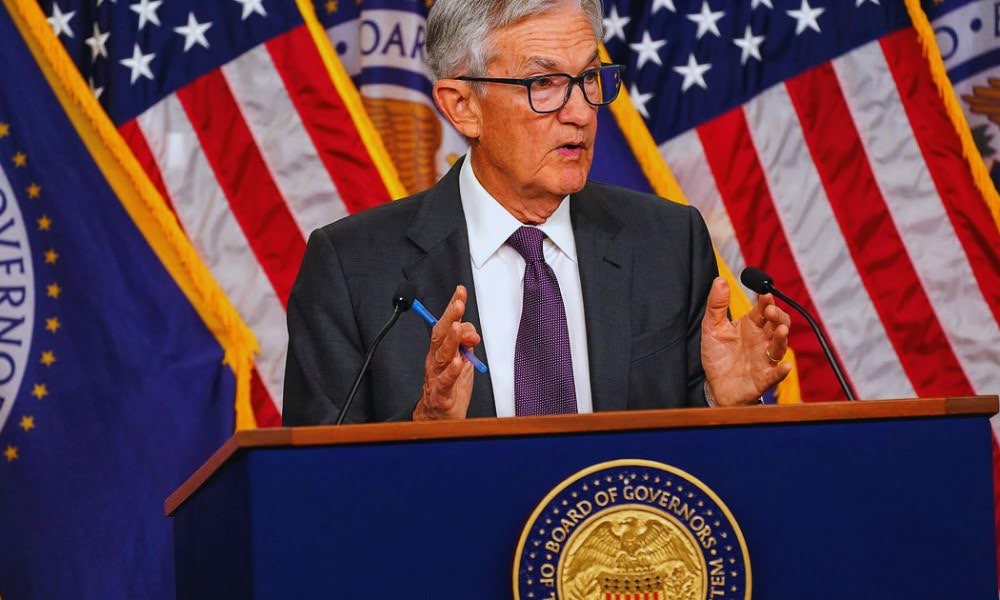Asia-Pacific Markets Tumble as U.S. Tariff Deadline Looms

Asia-Pacific markets dropped sharply on Wednesday as new country-specific tariffs imposed by U.S. President Donald Trump took effect.
Market Reaction Across Asia-Pacific
Australia’s S&P/ASX 200 fell 1.8%, ending the session at 7,375. In Japan, the Nikkei 225 plunged 3.93% to close at 31,714.03, while the broader Topix index declined 3.4% to settle at 2,349.33.
South Korea’s Kospi slipped 1.74% to 2,293.7—officially entering a bear market after losing over 20% since July. The small-cap Kosdaq ended 2.29% lower.
Despite regional declines, Hong Kong’s Hang Seng Index rose 0.68% to 20,264.49. The Hang Seng Tech Index gained 2.64%, while China’s CSI 300 advanced 0.99% to finish at 3,686.79.
New Tariffs Compound Market Fears
The latest round of tariffs added to the existing 10% baseline duty implemented on Saturday. With these additional measures, Chinese goods now face a combined tariff rate of 104%.
In India, the central bank reduced its policy rate by 25 basis points to 6%, as anticipated by analysts. India’s Nifty 50 dropped 0.39% following the move.
U.S. Stocks Extend Losses
U.S. markets also closed in the red. The Dow Jones Industrial Average fell 320.01 points, or 0.84%, to 37,645.59—marking a four-day decline of over 4,500 points driven by tariff concerns.
Apple led losses due to anticipated higher costs from China tariffs.
The S&P 500 slid 1.57% to 4,982.77, falling below the 5,000 mark for the first time since April 2024.
The index is now down nearly 19% from its February peak, hovering near bear market territory. Over the past four sessions, it has declined by more than 12%.
Historic Drops in Asia
Markets from Shanghai to Tokyo and Sydney to Hong Kong experienced drops not seen in decades. The Shanghai Composite fell over 8% intraday, while Hong Kong’s Hang Seng dropped more than 13%.
Japan’s Nikkei 225 closed down 7.8%. One analyst told the BBC the plunge resembled a “bloodbath.”
In Europe, markets opened lower with banks and defense firms hit hardest. These declines followed last week’s global slump after Trump announced new tariffs ranging between 10% and 46% on most nations.
Manufacturing Economies Take the Hit
The tariffs are a major blow to Asia’s manufacturing powerhouses that depend heavily on U.S. markets for exports—from garments to automobiles.
Countries affected include affluent allies like Japan and South Korea, each now facing 26% tariffs, and developing economies like Vietnam, which will be subject to a 46% levy. Trump labeled Vietnam one of the “worst offenders.”
Other nations impacted include Cambodia (49%), Thailand (36%), and China, which now faces an overall tariff burden of 54%. Baseline 10% tariffs have already taken effect in countries like Singapore, New Zealand, and Australia.
Long-Term Outlook Dim
“Asia is bearing the brunt of the US tariff hike. While there could be some room for negotiation, a new regime of higher tariffs is here to stay,” said Qian Wang, Asia Pacific chief economist at Vanguard.
Asian economies are particularly vulnerable to fears of a global trade war that could trigger a U.S. slowdown or recession, potentially reducing demand for Asian exports.
Holiday Closures Compound Selloffs
Markets in mainland China, Hong Kong, and Taiwan saw sharper losses as they reopened after public holidays and reacted to declines elsewhere.
The Shanghai Composite closed 7.3% down, while Taiwan’s Weighted Index fell 9.7%—its largest drop on record.
Australia’s ASX 200 dropped 4.2%, and South Korea’s Kospi ended 5.6% lower. The Hang Seng suffered a 13.2% fall, its steepest decline since 2008.
Inflation and Recession Fears Escalate
“Tariffs are feeding into expectations around inflation and a recession,” noted Julia Lee, head of client coverage at FTSE Russell.
Goldman Sachs increased its forecast of a U.S. recession in the next year to 45%, up from 35%, and cut its growth outlook. JPMorgan now sees a 60% chance of a U.S. and global downturn.
“This is negative to the global and Asia economy, especially those small open economies, both in the short term and long-term.”
Export-Dependent Nations at Risk
Export-heavy countries like Vietnam and Bangladesh could suffer significantly.
U.S. brands such as Nike and Gap manufacture in Vietnam, while Bangladesh exports $8.4 billion in garments annually to the U.S., according to the Bangladesh Garment Manufacturers and Exporters Association. Trump’s 37% tariff on Bangladesh spells trouble for the South Asian nation.
“Asia is likely to feel a disproportionate brunt of this turmoil because Asia sends more exports to the US than to other markets,” said Frank Lavin, former U.S. Department of Commerce official.
Global Fallout Intensifies
China has retaliated with its own tariffs, worsening Friday’s market crash. All three major U.S. indexes dropped over 5%, with the S&P 500 down nearly 6%, marking the worst week for U.S. stocks since 2020.
In the UK, the FTSE 100 plummeted nearly 5%, its largest fall in five years. Markets in Germany and France also declined sharply.
Lee warned of continued turbulence: “US futures trading lower point to another hard session on Wall Street tonight.”
Since Trump’s sweeping 10% import tax announcement, trillions in global market value have been erased, with dozens of countries—including top U.S. trading partners like China, the EU, and Vietnam—facing much steeper rates.








